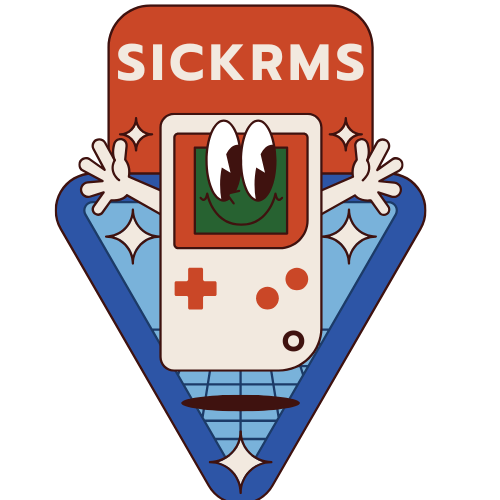In a world where everyone’s racing to the top, a leveling system can be the secret sauce to success. Whether in gaming, personal development, or even workplace dynamics, understanding how to level up can transform the mundane into the extraordinary. Imagine strutting into a meeting like a boss after mastering the art of progression—who wouldn’t want that?
Table of Contents
ToggleOverview of Leveling Systems
Leveling systems function as structured pathways for progression in various fields. These systems help individuals identify their status while encouraging growth through defined parameters. In gaming, leveling systems introduce experience points, unlocking new abilities and enhancing player engagement. Personal development employs tiers that track achievements, fostering a sense of accomplishment through measurable goals.
Workplace dynamics often utilize leveling systems to establish clear hierarchies or job grades. These organizational frameworks guide professional development, offered via mentorship or training opportunities. Employees receive recognition as they ascend through established levels, motivating them to strive for advancement.
Many leveling systems adopt tiered classifications, which provide clarity on expectations and competencies. Higher levels typically require ongoing skill acquisition and demonstrated expertise. Each level reflects an individual’s commitment to personal or professional growth, making the pathway more appealing.
Feedback loops frequently accompany leveling systems, providing vital insights into performance metrics. Regular assessments allow users to gauge their progress, adapting their strategies as necessary. By implementing these systems, individuals can optimize their efforts, turning ordinary experiences into opportunities for excellence and recognition.
Types of Leveling Systems

Leveling systems exist in various forms, each serving distinct purposes across different environments, such as gaming, personal development, and workplaces.
Manual Leveling Systems
Manual leveling systems rely on individual effort to track and achieve progress. In this framework, participants actively engage in tasks to gain experience points or milestones. Each activity directly correlates to development, where the more one invests effort, the greater the rewards. For example, a student may complete assignments to unlock higher grades over time. Trainers often utilize this system to measure skills and provide direct feedback. These systems emphasize personal responsibility and encourage goal setting through self-motivation.
Automatic Leveling Systems
Automatic leveling systems function through algorithms or preset criteria that evaluate and adjust progress without manual input. Often found in online platforms, these systems automatically assign experience points based on user interactions or achievements. An example includes video games that reward players for completing challenges or playing regularly. Automatic systems promote engagement by consistently adapting to users’ behaviors, providing a seamless progression experience. Users receive notifications or updates about new levels, fostering a sense of accomplishment with minimal effort.
Benefits of Using a Leveling System
Leveling systems offer various advantages that can significantly enhance the user experience across different domains. Here are two key benefits.
Improved Accuracy
Accuracy improves through leveling systems as they clearly define parameters for success. Individuals understand their current status and the steps needed to progress within their chosen area. This transparency fosters realistic goal setting. When progress is measurable, it becomes easier to identify strengths and weaknesses. Enhanced feedback mechanisms also help track development, pinpointing areas needing attention. Regular assessments increase accountability, ensuring individuals stay on course while minimizing errors or missteps.
Enhanced Productivity
Productivity benefits from structured pathways that leveling systems create. Clear hierarchies motivate individuals to advance while encouraging skill acquisition. Engaged employees often show increased output as they pursue specific goals. With regular benchmarks, motivation remains high, consistently driving performance. Individuals experience a sense of achievement when they reach new levels, which fuels further efforts. As a result, productivity not only rises but also sustains long-term engagement in personal and professional settings. Levels act as milestones that prompt individuals to strive for continuous improvement.
Applications of Leveling Systems
Leveling systems find applications across various industries, fostering progress and enhancing performance metrics.
Construction Industry
In the construction industry, leveling systems play a vital role in ensuring accurate site measurements. Construction teams rely on these systems to determine ground elevation and maintain proper structural integrity. Advanced technologies, such as laser leveling, allow for precision in laying foundations and installing fixtures. Effective leveling minimizes labor costs and reduces material waste, contributing to higher project efficiency. Clear benchmarks enable workers to track progress against project timelines, enhancing accountability and improving overall workflow.
Agriculture
Agricultural practices benefit significantly from leveling systems, particularly in land management. Farmers utilize leveling to ensure water drainage and optimize irrigation patterns. This technique leads to improved crop yields by promoting even water distribution and minimizing erosion. Specific leveling tools, such as laser-guided systems, allow for precise adjustments in land contouring. Additionally, accurate assessments of field conditions foster better decision-making related to planting and harvesting schedules. Overall, these systems enhance productivity and sustainability in agricultural operations.
Manufacturing
In manufacturing, leveling systems streamline processes by establishing performance benchmarks. Factories use these systems to monitor equipment efficiency and employee output. Implementing tiered metrics allows managers to identify areas for improvement and implement targeted training programs. With clear progress indicators, employees receive recognition for their achievements, motivating them to pursue higher efficiency levels. Advanced automation technologies contribute to consistent measurement and assessment, leading to increased productivity and a stronger competitive edge in the market.
Conclusion
Embracing a leveling system can significantly enhance various aspects of life. Whether in gaming personal development or professional environments these systems create structured pathways that encourage growth and achievement. By providing clarity on expectations and fostering motivation through defined parameters individuals can elevate their experiences and reach new heights.
The integration of feedback loops ensures continuous improvement while the distinction between manual and automatic systems allows for tailored approaches to progression. As industries increasingly adopt these frameworks the benefits of improved accuracy and productivity become evident. Ultimately leveling systems not only guide individuals on their journey but also transform ordinary experiences into opportunities for excellence and recognition.






